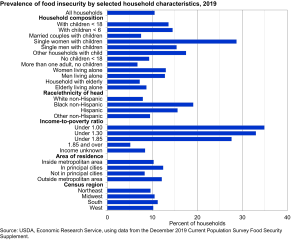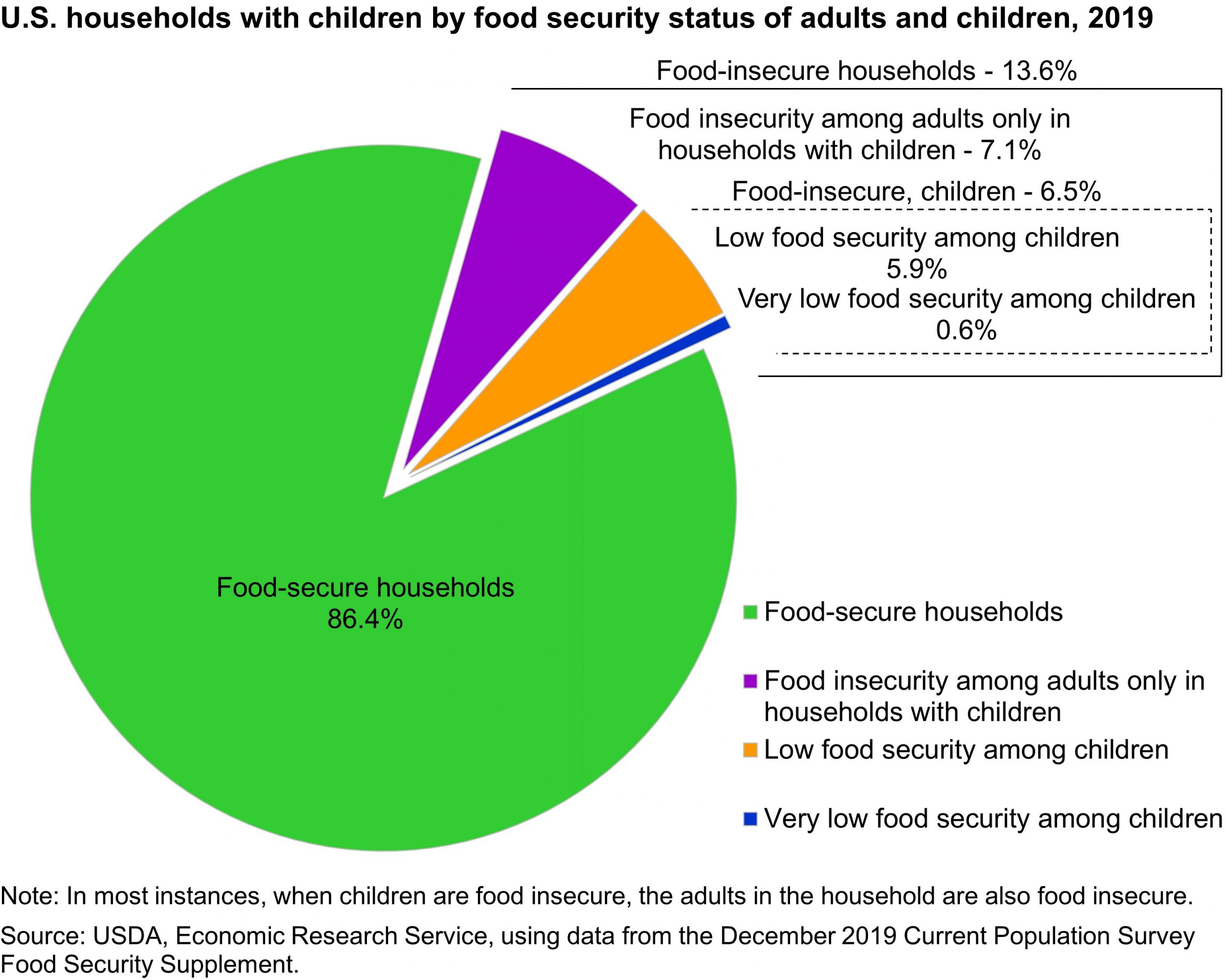Food Insecurity: An Introduction
1.2 Who Does it Affect?
Worldwide, three main groups are most at risk of hunger: the rural poor in developing nations who also lack access to electricity and safe drinking water, the urban poor who live in expanding cities and lack the means to buy food, and victims of earthquakes, hurricanes, and other natural and man-made catastrophes.5 In the US we also see high rates of hunger and malnutrition in both rural and urban areas, but there are additional subgroups that are at risk and are more likely than other Americans to face these maladies. They include low income families and the working poor, who are employed but have incomes below the federal poverty level, the homeless, seniors, children, and some college students.

Low-income Families/Working Poor
Often people suffering from malnutrition, especially the micronutrient deficiency form, live in food deserts, geographic areas where access to affordable, healthy foods (especially fresh fruits and vegetables) is limited or non-existent, primarily because of a lack of grocery stores within traveling distance. This can occur in both rural and urban settings. Urban areas are food deserts if a full-service grocery store is not available within one mile of a location. Rural food deserts are generally defined as a county where residents must drive more than 10 miles to access a supermarket or grocery store. About 20% of rural counties in the US are considered rural food deserts.7
Food deserts are more likely to occur in areas with high minority populations and low incomes. These areas do not have grocery stores, and many urban residents do not have cars, relying on public transportation. In rural areas, public transportation is unavailable so low income residents have to find personal transport, often in unreliable vehicles. A trip to a grocery store could take several buses and/or several hours, and the working poor have little money or time to spend accessing these locations. Instead, they must rely on fast food restaurants selling cheap meat and dairy, or convenience stores selling processed foods like soda, chips, or other “junk food.” These areas are called food swamps.8 Although this sounds similar to a food desert, and often they occur in the same area, a food desert is defined by what is not available (a grocery store) whereas a food swamp is defined by what is available (only fast food/junk food). Often the food items sold in these types of restaurants or in convenience stores are not culturally appropriate, are not suitable for those with dietary restrictions due to underlying medical conditions such as lactose or gluten intolerance, type 2 diabetes, hypertension, or other forms of cardiovascular disease, and are significantly more expensive.9 These types of food environments can also partly explain the higher rates of adult obesity in populations living in these areas.8
Seniors
Senior citizens are a major at-risk group for food insecurity. Many elderly people are frail and isolated, which affects their ability to meet their dietary requirements. In addition, many also have low incomes, limited resources, and difficulty purchasing or preparing food due to health issues or poor mobility. As a result, more than nine million senior citizens in the US face the threat of hunger, and more than five million have low or very low food security.10
The Homeless
One of the groups that struggles with hunger are the millions of homeless people across North America. According to data from the 2020 Annual Homeless Assessment Report by the US Department of Housing and Urban Development, homelessness has been increasing annually for the past four years.11 Hunger and homelessness often go hand-in-hand as homeless families and adults turn to soup kitchens, food pantries, and/or resort to begging for food.
Children
Rising hunger rates in the US particularly affect children. More than one out of five children, or 21.6% of all American children, live in a food insecure household and spend at least part of the year hungry.3 Often their only daily meals occur at school. Although the prevalence of food insecurity varies, rates are higher than the national average in households with children, especially children under age six and headed by a single parent who is Black or Hispanic (especially if the single parent is female). There is also more food insecurity in Southern states.12 Hunger delays growth and development and affects educational progress because it is more difficult for hungry or malnourished students to concentrate in school. In addition, children who are undernourished are more susceptible to contracting diseases, such as measles and pneumonia.1

College Students
In recent years there has been a realization that college students are more likely to be food insecure than ever before. Surveys report that about 15% of students are food insecure with another 16% at risk for food insecurity. Food insecurity is more common in students of color, those who receive multiple forms of financial aid, and those who are also experiencing housing problems.13 In a large national survey of 43,000 students at both community colleges and universities, 36% reported food insecurity in the last 30 days, 36% also had housing insecurity, and 9-12% reported that they were homeless.14 It’s difficult for students who are hungry or homeless to be successful in college, so many college campuses now have food pantries and food and housing assistance programs for their students in need.
